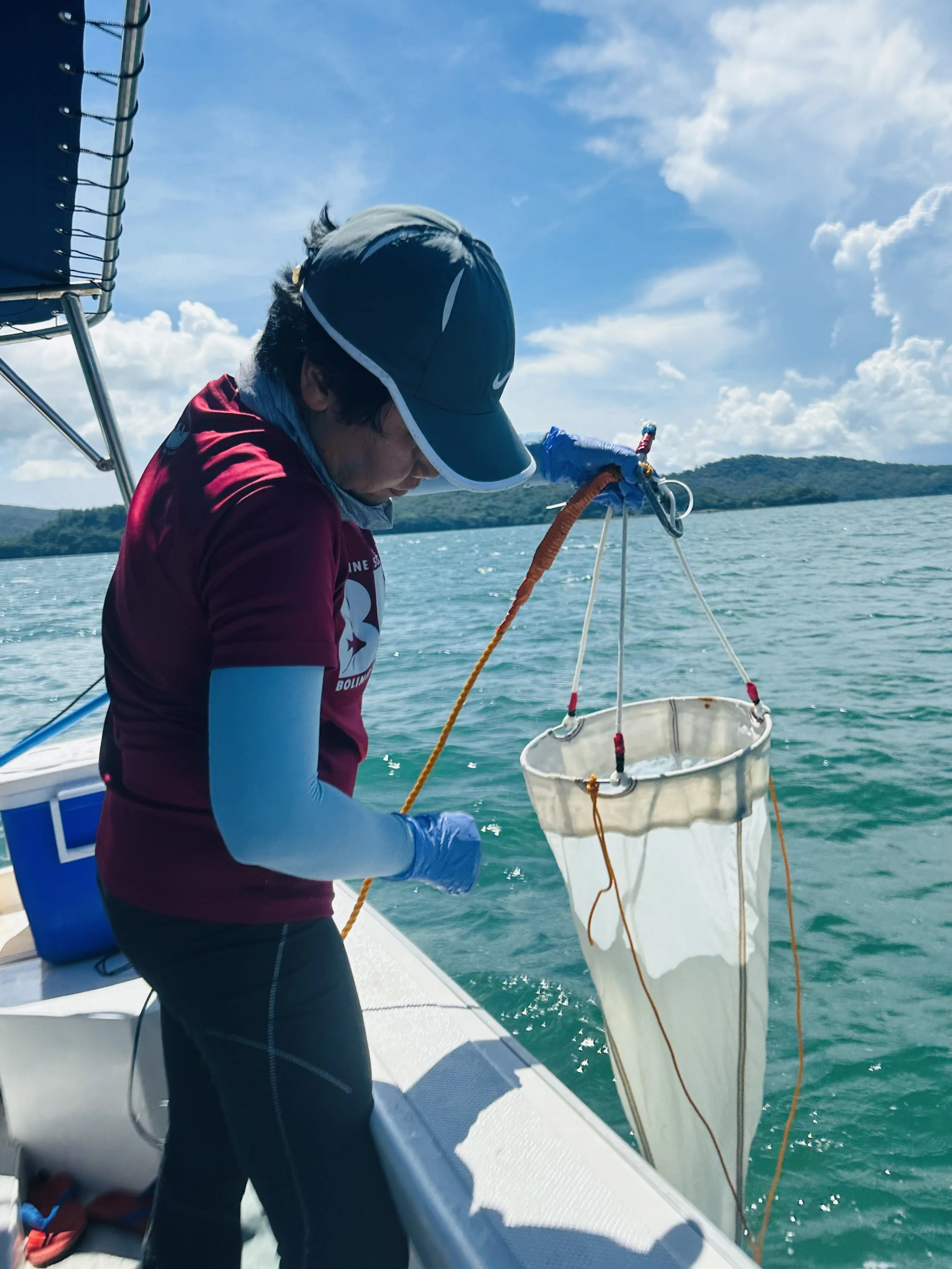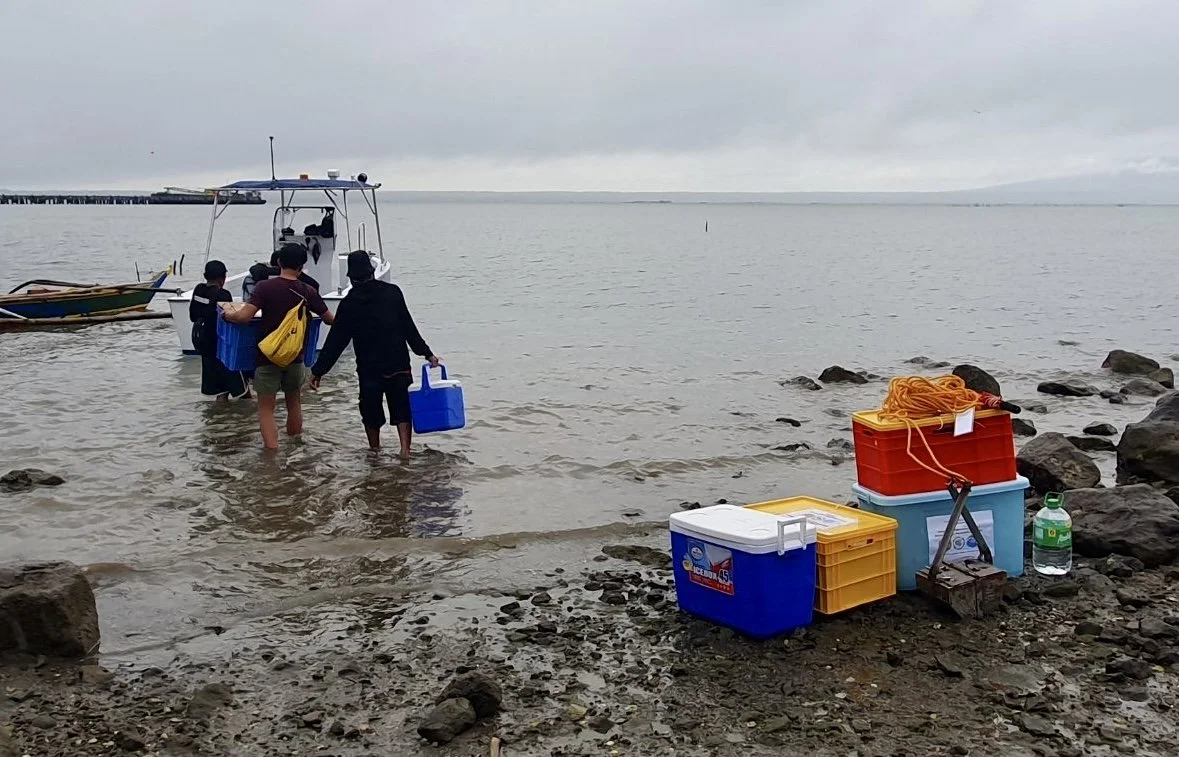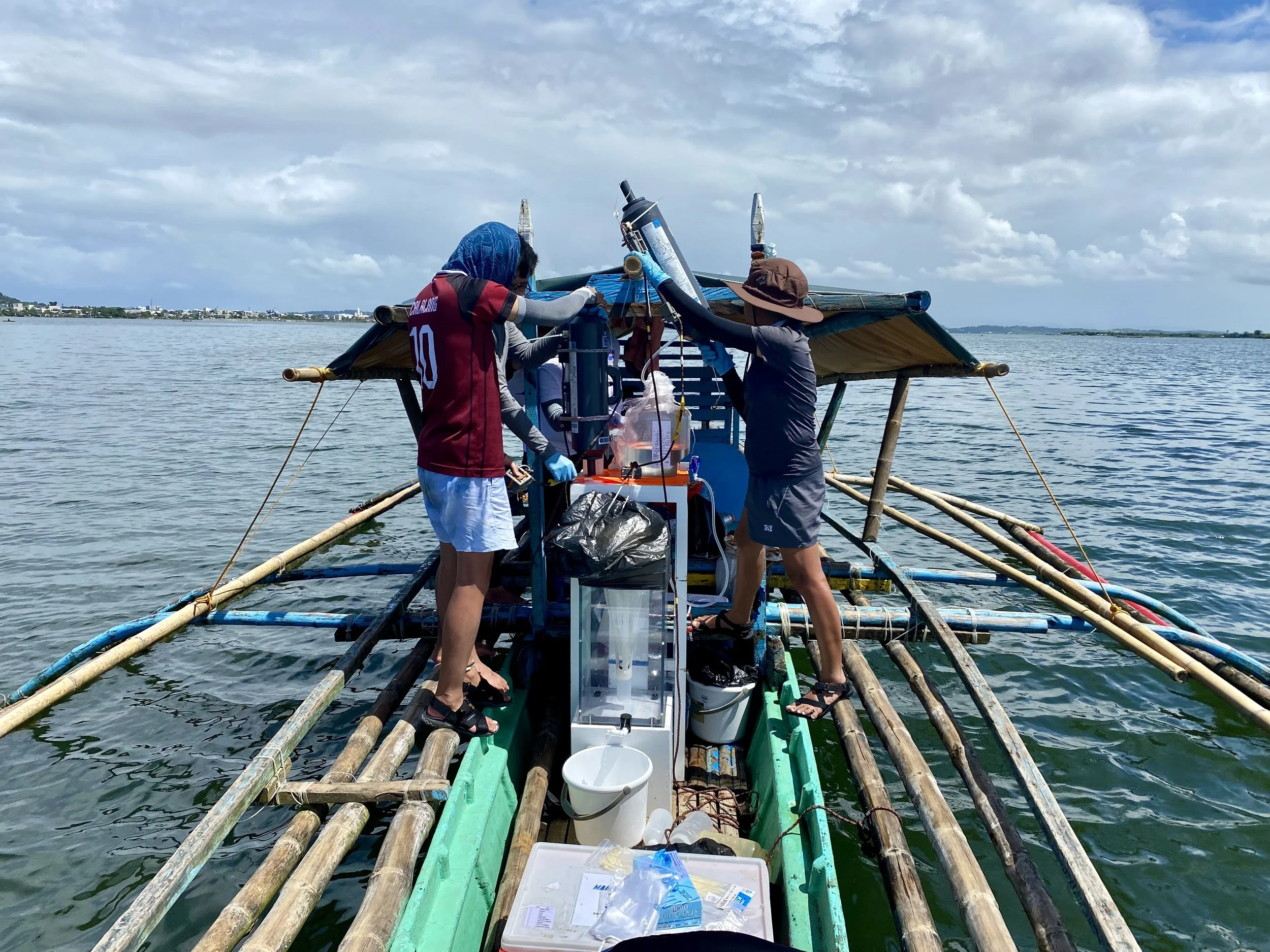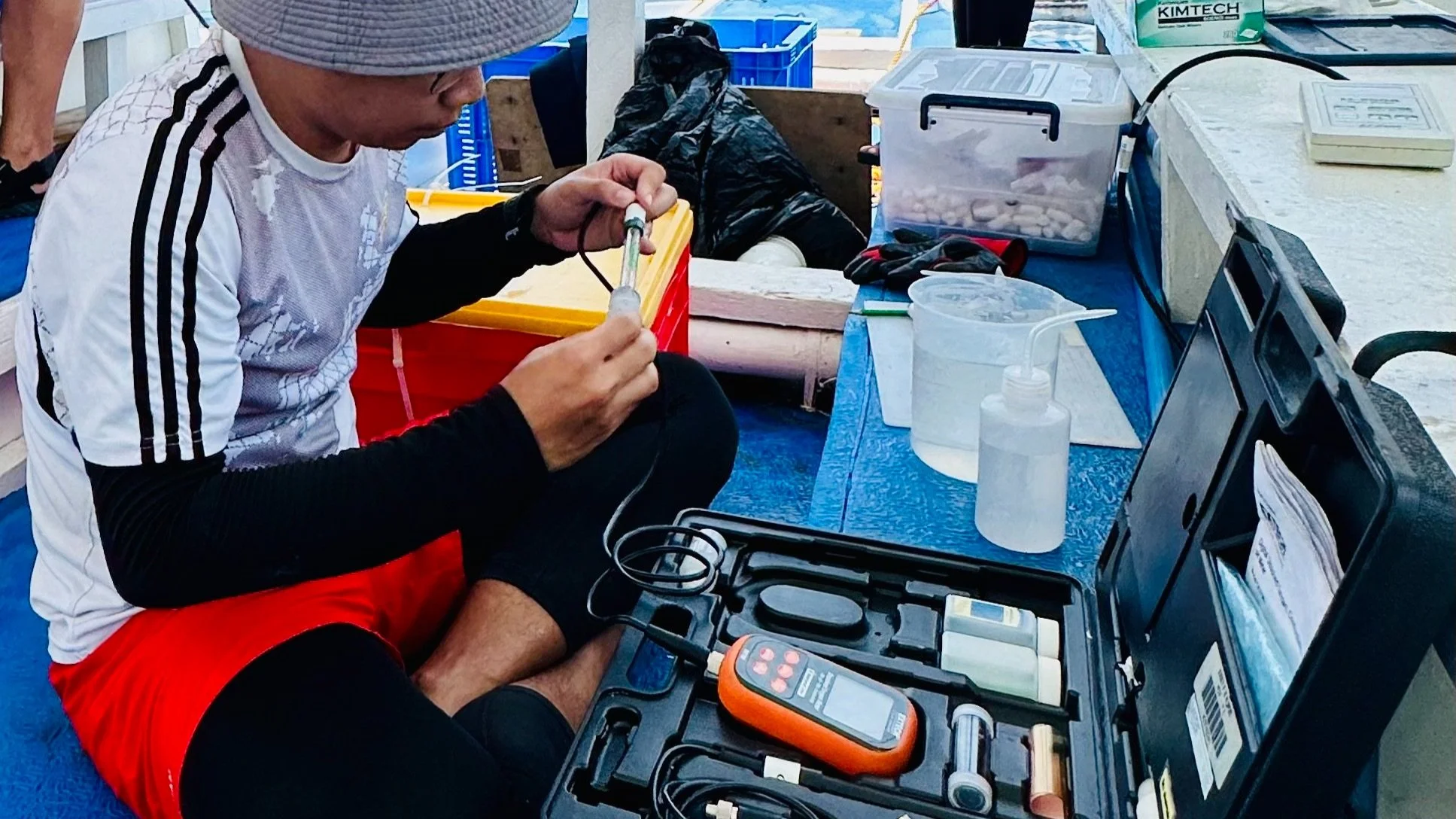TRACE-HABS PROJECT
“ The role of trace metals and their potential interactive effects with macronutrients in the growth and toxin production of HAB-forming algal species are still largely unknown. “
(Top) Map showing the HAB-prone areas across the Philippines. Occurrence data available from IOC-UNESCO Harmful Algae Information System. (Bottom) HAB-forming species Ceratium furca and Pyrodinium bahamanse (Photo by: PCCalalang)
Scientific Basis:
Research on HABs in the Philippines started since the first reports of its occurrence in the 1980s. Since the pioneering work of Azanza and colleagues, information about growth promoters and toxin production of some HAB species has been known. The increasing incidence of HABs and the uncertainty of effects of some ecological parameters on biotoxin production warrant further research on HABs and delineate specific mode of actions or toxin formation mechanisms of different species. Understanding the interactive effects between growth parameters, which will specifically look at trace metal-nutrient interactions and contribution of aerosol deposition, and their influence on phytoplankton community standing stock and bloom succession will contribute towards projection capability for HABs occurrence, which may offer avenues for preemptive efforts and early warning systems. This will ensure protection for coastal communities relying on seafood and seafood products for nutrition and improve response mechanisms available to all stakeholders.
TRACE-HABs Project: “Macronutrient, carbon cycling, and trace-metals: Impacts on phytoplankton community structure and toxin production of harmful algal blooms”
Objective:
To elucidate the effect of trace metal availability on the growth and toxin production of HAB species as well as phytoplankton community succession in HAB-prone bays in the Philippines.
Study sites
-
In Bolinao, Pangasinan, harmful algal blooms (HABs) have indeed been primarily associated with Alexandrium minutum, a dinoflagellate known for producing paralytic shellfish toxins (PSTs) . These blooms are typically fueled by nutrient loading from aquaculture, agricultural runoff, and local environmental conditions (Azanza et al. 2005; San Diego-McGlone et al. 2008).
-
In Tacloban, Leyte, HABs have been an ongoing concern, particularly in the coastal waters of Eastern Visayas. Recent studies have highlighted that HABs, driven by species like Pyrodinium bahamense, occur almost year-round, with blooms peaking in certain months. These blooms pose risks to both public health and local fisheries, with paralytic shellfish poisoning (PSP) being a primary concern (Ravelo et al. 2022; Azanza et al., 2024)
-
Description text goes here
Laboratory Experiments
More about the project:
Funded by: the Department of Science and Technology - Philippine Council for Agriculture, Aquatic and Natural Resources Research and Development (DOST-PCAARRD)
In Cooperation with Research Center for Environmental Changes, Academia Sinica (Taipei, Taiwan)
Project Duration: June 2020 - May 2024 (Completed)
“Effects of nitrate and iron on growth, toxin production, and intracellular metal quota of Alexandrium minutum”
by Hannah Mae Sucgang (MSc Marine Science Student, DOST-ASTHRDP Scholar)
Status: On-going
“Influence of phosphate and zinc co-limitation on the growth dynamics and biochemical characteristics of Alexandrium minutum and co-occuring Chaetoceros calcitrans and Chatonella subsalsa”
by Jomari R. Noe (MSc Marine Science Student, DOST-GREAT Scholar)
Status: On-going
“Growth and biochemical composition of marine microalgae Tetraselmis tetrahele under varying iron and nitrate concentrations”
by Dolly C. Manic & Richard D. Redil (Research Associates)
Status: Completed
Future Works
As our laboratory develops, we will soon be able to grow and monitor continuous algal cultures, and analyze both nutrient and trace metal contents throughout our experiments. We also plan to study other species of harmful algal blooms, such as our newly acquired culture of Pyrodinium bahemense.









